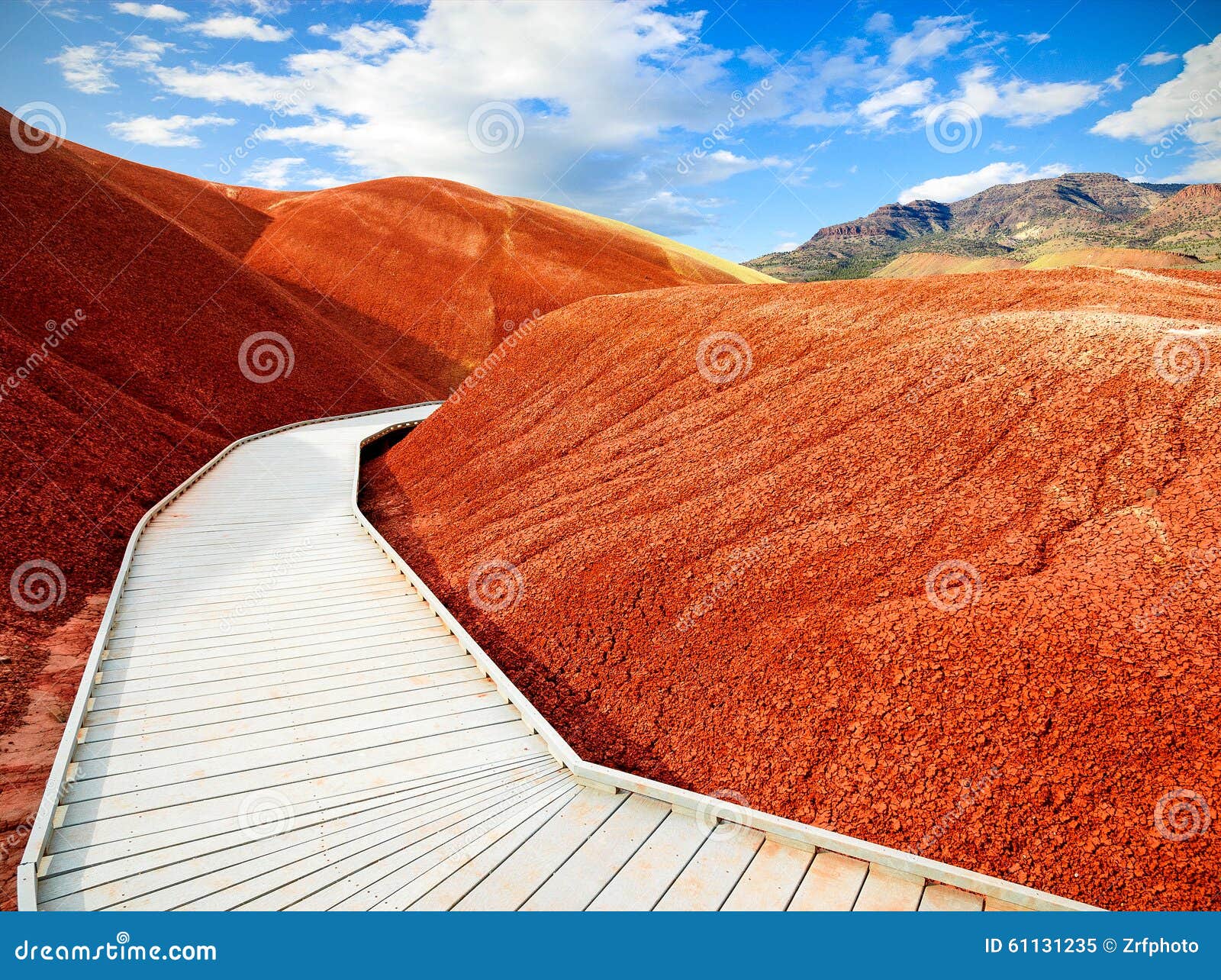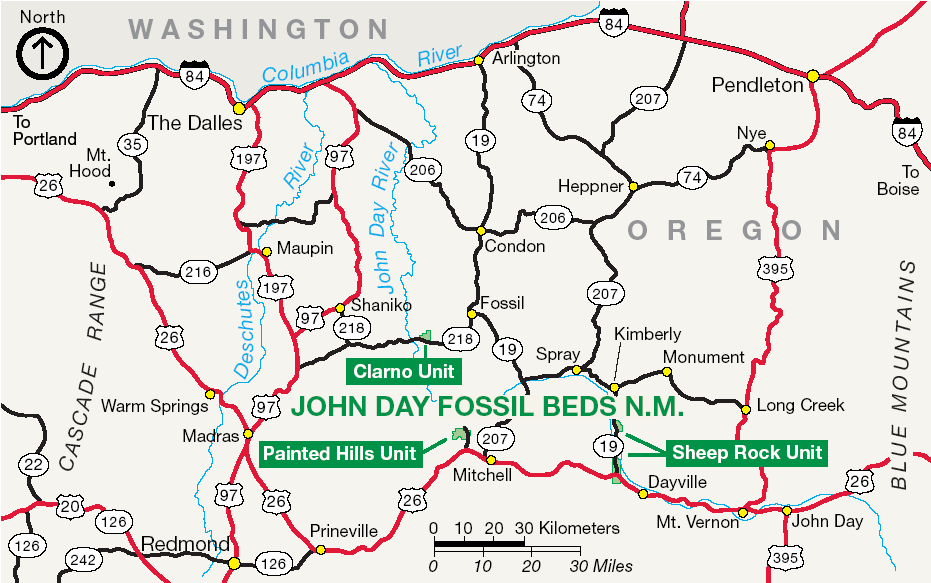John Day Fossil Beds National Monument U S Nationwide Park Service
Table of Content
The Clarno Unit, close to the John Day River’s Clarno Bridge, includes huge volcanic particles flows and lahars which may be 45 to 50 million years in age. Leaves and entire bushes, discovered as petrified remnants, report a subtropical ecosystem just like that present in modern Costa Rica or Veracruz, Mexico. Early ancestral bananas, figs, palms, and bald cypress flourished amid a volcanic landscape. Rainfall totaled about eighty inches per year, and atmospheric carbon dioxide was a lot larger than today’s ranges.

This unit is generally in Grant County; a small half extends into Wheeler County. The Sheep Rock Unit is further subdivided into the Mascall Formation Overlook, Picture Gorge, the James Cant Ranch Historic District, Cathedral Rock, Blue Basin, and the Foree Area. Some of these are separated from each other by farms, ranches, and other parcels of land that aren't part of the park. Within the heavily eroded volcanic deposits of the scenic John Day River basin is a well-preserved fossil report of vegetation and animals.
Flora
Condon's work led to his appointment in 1872 as Oregon's first state geologist and to worldwide fame for the fossil beds. Specimens from the beds have been sent to the Smithsonian Institution and different museums worldwide, and by 1900 greater than 100 articles and books had been revealed about the John Day Fossil Beds. The John Day River, a tributary of the Columbia River, flows generally west from the Strawberry Mountains earlier than reaching the national monument.
Two fossilized enamel found just lately within the Rattlesnake stratum near Dayville are the earliest report of beaver, Castor californicus, in North America. The beaver tooth, that are about 7 million years old, have been scheduled for display on the Condon Center. The models cowl a complete of thirteen,944 acres of semi-desert shrublands, riparian zones, and colorful badlands. About 210,000 individuals visited the park in 2016 to have interaction in outside recreation or to visit the Thomas Condon Paleontology Center or the James Cant Ranch Historic District. Junior Ranger Program - The Junior Ranger booklet can be picked up on the customer middle. The Blue Basin Overlook Trail is located on the Blue Basin Trailhead and is a three.25-mile loop path with over 600 feet of elevation gain/loss.
Map This On The Oregon Historical Past Wayfinder
Condon explored the region and his discoveries amazed the scientific community and paleontologists have been digging there ever since. A 2003–04 survey of the monument discovered 55 species of butterflies such because the widespread sootywing, orange sulphur, nice spangled fritillary, and monarch. The common nighthawk is certainly one of more than 50 species of birds seen within the monument. Weather knowledge for town of Mitchell, near the Painted Hills Unit, show that July and August are the warmest months, with an average high of 86 °F (30 °C) and a median low of fifty two °F (11 °C).
John Day Fossil Beds National Monument's breathtaking surroundings is a spot where visitors can discover historic crops and animals. John Day Fossil Beds National Monument is located in north central Oregon, about one hundred forty five miles southeast of Portland. To learn more in regards to the monument, please select an area of curiosity from the navigation bar on the left. Divided into three units—Clarno, Sheep Rock and Painted Hills—the 19,000-acre John Day Fossil Beds National Monumentis one of many world’s richest repositories of plant and mammal fossils.
Related Historic Data
One of their leaders, Captain John M. Drake, collected some of these fossils for Thomas Condon, a missionary pastor and newbie geologist who lived in The Dalles. Recognizing the scientific importance of the fossils, Condon accompanied soldiers touring via the region. He found rich fossil beds alongside Bridge Creek and near Sheep Rock in 1865. Condon's journeys to the world and his public lectures and stories about his finds led to broad interest within the fossil beds amongst scientists corresponding to Edward Drinker Cope of the Academy of Natural Sciences. One of them, paleontologist Othniel C. Marsh of Yale, accompanied Condon on a trip to the region in 1871.
It turns sharply north between the Mascall Formation Overlook and Kimberly, where the North Fork John Day River joins the primary stem. Downstream of Kimberly, the river flows generally west to downstream of the unincorporated community of Twickenham, and usually north thereafter. Bridge Creek passes via Mitchell, then north along the eastern fringe of the Painted Hills Unit to fulfill the John Day downstream of Twickenham. Intermittent streams in the Clarno Unit empty into Pine Creek, which flows simply past the south edge of the unit and enters the John Day upstream of the unincorporated community of Clarno. The John Day Fossil Beds National Monument consists of three extensively separated units—Sheep Rock, Painted Hills, and Clarno—in the John Day River basin of east-central Oregon. Located in rugged terrain in the counties of Wheeler and Grant, the park units are characterized by hills, deep ravines, and eroded fossil-bearing rock formations.
In June 2011, work was finished on a brand new ranger residence within the Painted Hills Unit that makes the unit nearly carbon-neutral. Solar panels generate enough electrical energy to power the house as well as the ranger's electrical automobile, on mortgage from its producer for a year. The project is part of ongoing efforts to make the whole park carbon-neutral. The fossils of the area had been first discovered by soldiers who traveled The Dalles Military Road to the Canyon City space following the discovery of gold there in 1862. They brought the fossil discoveries to the eye of Reverend Thomas Condon, Oregon’s first state geologist and first chair of the Geology Department at the University of Oregon. In the 1870s, different famed paleontologists, including Othniel Marsh and Edwin Drinker Cope, and other investigators, including U.S.

All were hunter-gatherers competing for sources corresponding to elk, huckleberries, and salmon. Researchers have identified 36 sites of related archeological interest, including rock shelters and cairns, in or adjacent to the John Day Fossil Beds National Monument. Most important among the prehistoric sites are the Picture Gorge pictographs, consisting of six panels of rock art in the canyon at the south finish of the Sheep Rock Unit. Sign as much as receive the newest NPF information, information on how one can support our nationwide treasures, and travel ideas in your next journey to the parks.
Floyd Officer was the homesteader whom Cant purchased the land and authentic home from in 1910. Sheep Rock is beautiful with its coloring and erosion worn rippled cliffs the place the fossils are. Visitors can also go to the theater and watch an 18-minute video sharing geologic historical past and details about John Day Fossil Beds National Monument. John Day Fossil Beds NM is damaged into three items Sheep Rock, Painted Hills, and the Clarno Unit.

More than 60 plant species are fossilized in these strata, similar to hydrangea, peas, hawthorn, and mulberry, in addition to pines and many deciduous bushes. One of the notable plant fossils is the Metasequoia , a genus thought to have gone extinct worldwide until it was found alive in China in the early twentieth century. The John Day Fossil Beds, situated in Central Oregon, contain fossiliferous deposits that span over 40 million years, preserving a sturdy document of Cenozoic crops and mammals in the northwest US.
Scientists have estimated the fossil beds stretch across 20,000 square miles of this central Oregon space with much of that land privately held although explored together with the federal government holdings. The Thomas Condon Paleontology and Visitor Center are positioned within the Sheep Rock Unit. Specific occasions for the activities can be found from rangers at the monument.

Likewise, hard rock surfaces and steep slopes from which soils wash or blow away tend to remain naked. Merriam, a University of California paleontologist who had led expeditions to the area in 1899 and 1900, encouraged the State of Oregon to guard the world. In the early Nineteen Thirties the state began to purchase land for state parks at Picture Gorge, the Painted Hills, and Clarno that later grew to become part of the nationwide monument. In 1974 Congress licensed the National Park Service to determine the national monument, and President Gerald R. Ford signed the authorization.
Comments
Post a Comment